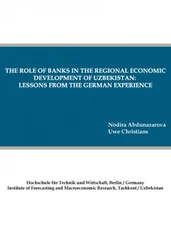Prospects of Reduction of the Average Number of Hours Worked for a Week, Month, and Year
Introduction of a 6-hour, and then less endurable, working day means reduction of working hours within a working week, working month, and year, other things equal. This is one of the appearances of the key role of working day duration.
At the same time, decreasing in working time duration within longer periods is possible when along with set weekends and holydays new ones are introduced, the number of days of annual leaves increases.
At the number of people occupied in production both forms of decreasing in the number of working hours for a period have the same source – saving of labour. That is why there is objectively a problem of choosing between two ways of working time reduction solving of which includes their combination too.
As it follows from the previous examination, this choice was mainly made in favor of additional nonworking days when tempos of decreasing in the average number of working hours per week (and it also means per month) and per year outstripped tempos of working day reduction significantly. As a result, if daily workload of industrial employees decreased, it was not considerable during last decades. In most of the developed countries their daily rate of free time did not amount to 0.5 on weekdays. Just like labourers of the pre-industrial epoch – slaves, serfs, artisans – within twenty-four hours they have to spend the main part of time of their social activities on making products and to remain in “the kingdom of necessity” – in the sphere of utilization of the forces of nature, connected to monotony of labour of little interest, risking their health and lives, etc. Conservation of old division of labour slows process of modern production down.
Quite another positive effect can be given by decreasing in hours worked for a week, month, and year by means of reduction of working day duration until 6 hours at first. In this case the space for daily free development of industrial employees will expand – for increasing in the level of proficiency and education, for actual participation in the trade union life, state governing, for regular physical training, systematic enjoyment of achievements of culture and arts, for a full family life and friendly relations.
Reduction of a working day until 6 hours and less without decreasing in salaries assists in turning nonworking time at weekends, holydays, and leaves into free time too. Weekends and leaves of employees who have moderate and decreasing workload, who have got used to fulfil different kinds of nonproduction social activities assisting in development of human abilities, including in their production collectives, are one thing. Periods beyond working days of people overloaded by work, spending their nonworking time on movement and shopping, on domestic labour and, thus, without free time on working days, are another thing. Nonworking time of such employees is mainly spent on passive leisure and recovery from stress, this time does not become actually free.
That is why decreasing in the average number of hours worked during a week, month, year, being if not exclusively then predominantly realized by means of working day reduction until 6 hours and then until 5 hours, etc., is a vital requirement of modern economic development. Within composite periods of labour activities decreasing in working hours is not an independent task objectively but it is a derivative of reduction of working day duration.
With that said proposals of increasing in the number of weekends should be assessed. Experts of the ILO proposed to set another weekend without reduction of the total number of hours worked during a week within a working week. It means, by the essence, prolongation of a working day by 25%.
Some employees are ready to accept this work schedule, wishing to decrease expenditures of time and money on getting to work. It means that a present working day is taken as excessively enduring, as “a day out of life” and, in that sense, adding two more hours to it seems to change nothing in principle, while an additional weekend seems to be a winning.
Actually, this measure would lead to a sharp drop in the daily rate of free time of industrial employees during working days. For example, in Italy it would drop from 0.30 to 0.1, a comparable drop would take place in the other countries too. Everyday conditions for development of such employees, even without that being highly restricted, would become worse significantly. Employees’ possibilities for participation in trade union work would be reduced what would lead to worsening their state by other parameters (the level of wages, social guarantees, etc.) An additional weekend is not able to make this worsening up.
Even introduction of an additional weekend with a proportional decrease in the number of hours worked for a week objectively worsens the state of employees, as compared to a similar decrease in this number by means of shift reduction until 6 hours. With an additional nonworking day daily workload would not change and time convenient for organization of collective activities to defend employees’ interests by trade unions would decrease by one day. With shift reduction until 6 hours workload would decrease and opportunities for participation in trade union work would increase.
With enactment of a 6-hour working day significance of increasing in annual leaves changes. The tendency for growth of their duration in the developed countries is partly a compensation of excessive workload within shifts. Decreasing in such workload assists in more substantial leaves, decreases relevance of their increasing for recreation of employees’ powers and health.
Thus, shift reduction until 6 hours and working day decreasing conditioned by it for employees of the nonproduction sphere are the most effective way of decreasing in the number of hours worked for more enduring periods of working activities.
In that context it is also expedient to examine prospects of reduction of the average number of hours worked for the period of seniority.
Prospects of Reduction of the Average Number of Hours Worked for the Period of Seniority
As it was noted before, the regularity of reduction of the average number of hours worked in the sphere of production for the period of labour activities also shows at the level of seniority in the economically developed countries at present time. At this level it gets a more specific expression transcendentally reflecting the dynamics of working hours within all other less enduring periods.
Socially normal limits of joining economically active population and leaving it are, by the essence, determined by the age of ability to work. This ability arises and passes away during a human’s life and, in this sense, it is connected to life span. As average life span increases with progress of the society, so the tendency for increasing in the period characterized by ability to work appears. This tendency shows as increasing in the period of ability to work of next generations of employees, as compared to the similar index of previous generations.
In these conditions the regularity of decreasing in the number of hours worked for a year on the basis of working day reduction, covering the working life of employees of different ages, including those who are simultaneously in the staff of labour resources, does not predetermine the corresponding dynamics of actual seniority of younger generations yet. For its decreasing it is essential that total reduction of working hours in consequence of their average annual decreasing prevails over their growth in consequence of increasing in nominal seniority, i.e., the number of years of economic activities.
From this point of view, it is expedient to analyze prospects of changing in actual seniority owing to realization of laws oriented to increasing in the age of retirement, enacted in several economically developed countries.
Читать дальше












